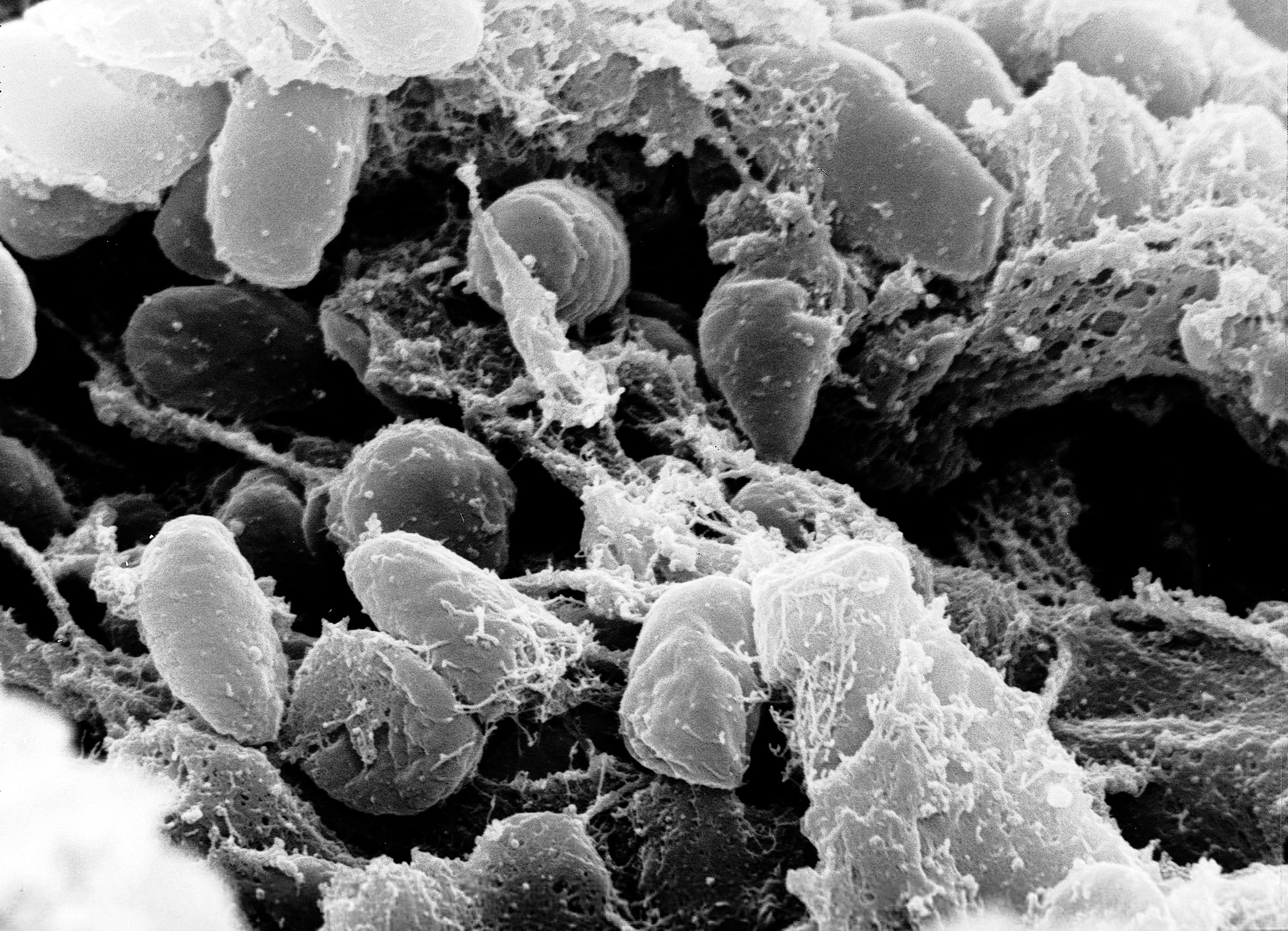
I was confident I knew a few things about the bubonic plague: It was caused by the bacterium Yersinia pestis, which was transmitted to humans by fleas hitching a ride on the back of traveling rats. It spread rapidly and devastated populations around the globe, and because cats, a natural predator of scurrying rodents, had been killed, rats proliferated along with their deadly, infectious cargo. However, until I read a recent PLoS ONE article, I did not realize there was still debate about whether Yersinia pestis was the infectious agent for Black Death, the disease that ravaged 14th century Europe and killed one third of its population.

To answer if Y. pestis was the causative agent of the Black Death, the epidemic that began in 1347 and remained pandemic in Europe until 1750, Haensch et al. tested teeth and bones of 76 human remains from five different mass graves in England, France, Germany, Italy and the Netherlands that had been dated to the 14th–17th centuries by 14C dating or archeological evidence.
DNA was isolated from dental pulp and bone samples using extensive precautions to prevent DNA contamination and false positives. Equivalent samples from skeletons not associated with epidemics were used as negative controls. PCR was used to detect the presence of pla, a Y. pestis-specific gene present on the multicopy plasmid pPst. Ten of the human remains from France, England and the Netherlands amplified the expected 148bp fragment, whereas a soil sample (to test the bacterial content) and 28 remains from the same burial locations that had no contextual signs of plague epidemics did not amplify the fragment. To eliminate PCR inhibitors as an issue, mitochondrial DNA was successfully amplified from the 28 negative controls. These ten pla-positive individuals were tested further using primers for the caf1 gene, carried on the low-copy-number Y. pestis plasmid pFra, and rpoB, a chromosomal locus. Five of the samples amplified a caf1 product; two amplified a rpoB fragment.
No samples from Germany or Italy were successfully amplified using the primer sets for the three genes. However, most of the samples were femoral bone, known to have lower quality DNA compared to dental pulp, so the researchers decided to test samples for the Y. pestis-specific F1 antigen via immunochromatography. Proteins are more resistant to degradation, and this test has been used to detect Y. pestis in other historical samples. Not only did PCR-positive samples react to the F1 antigen test, but samples that had not amplified, like the German and Italian bone samples, also tested positive.
With confirmation that the Black Death’s etiological agent was Y. pestis, the authors turned to genotyping the pandemic strains and comparing them to existing bacteria. Modern Y. pestis is divided into three biovars: Antiqua, Medievalis, and Orientalis. To decipher the Black Death strain, pla-positive remains were tested using PCR for the 93bp-deletion in glpD, characteristic of Orientalis, and a stop codon in napA, a signature of Medievalis, and the products were sequenced. The 93bp deletion was not present in seven of the nine French, Dutch and English samples that amplified, and the stop codon was absent in four of the Dutch and English samples that yielded a PCR product.
Since the Black Death strain did not fit into either modern biovar, its place on the Y. pestis phylogenetic tree was determined using 16 characteristic single nucleotide polymorphisms (SNPs) that mark the major branch points. Because of the limited amount of genetic material, only nine pla-positive samples from England (2), France (1) and the Netherlands (6) were used for the SNP study. The results demonstrated that the pandemic strain not only differed from the three modern biovars but map to locations on the phylogenetic tree where the three branches (0, 1 and 2) separate. Furthermore, the French and English Y. pestis genotypes have identical SNP profiles, placing them right where the three branches split whereas the Dutch Y. pestis genotype has an additional SNP that places it where branch 1 diverges, in the lineage of Orientalis and one of the Antiqua clusters. These two related but different isolates suggest that Europe was infected by more than one Y. pestis genotype over the course of the second plague pandemic.
I was fascinated with this study of Yersinia pestis and both the bacteria’s role in causing the Black Death and its location on the phylogenetic tree. Not only could samples be taken from human remains in burial pits and the DNA amplified to determine if Y. pestis was present, but enough samples were extracted to genotype the strain. While no one enjoys discussing the bubonic plague, our modern treatment methods insulate us from much of the horror experienced by the global population in last thousand years from the three pandemic waves of Y. pestis. And I will make sure to keep my cat healthy—just in case.
Literature Reviewed
Haensch S, Bianucci R, Signoli M, Rajerison M, Schultz M, Kacki S, Vermunt M, Weston DA, Hurst D, Achtman M, Carniel E, and Bramanti B (2010). Distinct Clones of Yersinia pestis Caused the Black Death. PLoS pathogens, 6 (10) PMID: 20949072
Sara Klink
Latest posts by Sara Klink (see all)
- A One-Two Punch to Knock Out HIV - September 28, 2021
- Toxicity Studies in Organoid Models: Developing an Alternative to Animal Testing - June 10, 2021
- Herd Immunity: What the Flock Are You Talking About? - May 10, 2021

Very interesting! I have always wondered this very same thing, ie; which strains of the Yersinia pestis bacterium affected Europe so much. Seriously, though… Nice summary of the PLoS ONE article, with a bit of “normal talk” at the end to get it down to my level. “phylogenetic tree… single nucleotide polymorphisms, immunochromatography… ummmmm, YEAH
Ben